YupWasn't that "Sahara"?
https://en.m.wikipedia.org/wiki/Sahara_(1943_American_film)
Sent from my iPhone using Tapatalk
YupWasn't that "Sahara"?
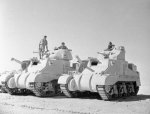
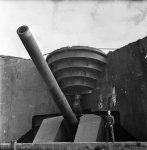
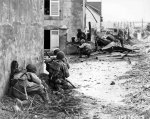

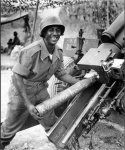
That was the same photos displayed a few weeks earlier, described as the 2nd ID fighting into Brest. I recall the infantryman lying on his left side with the knife tied to his right lower leg. Given the context and the description, I believe this was a picture of the fighting in Brest, although Pinterest says otherwise.September 29, 1944: ... Troops from 2nd Infantry Division moving to defensive positions at St. Vith, Belgium on September 29, 1944.;
View attachment 4495
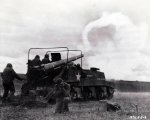
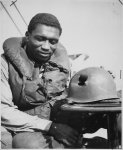
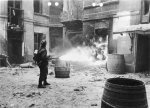
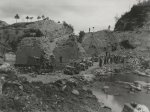
I missed this earlier, but the battle of Dompaire was important in September 1944.September 30, 1944: ... To the south, German forces launch heavy counterattacks to the flanks of the US XII Corps (part of Patton’s US 3rd Army) - throughout the day the Germans are hammered back, eventually losing over 100 tanks before a full retreat.
By this point, the Germans were simply frittering away their scarce resources or experiments like der Fuehrer's panzer brigades.During the whole day the village of Dompaire was under fire and any attempt to break out was stopped by even more intensive fire by the artillery. In the evening the 1st battalion of Panzer-Regiment 29 was destroyed. The overall losses for Panzer-Brigade 112 were horrible. An estimate of 350 dead, 1000 wounded and of the total of 90 tanks only 21 were left. Like Panzer-Brigade 106 a few days before Panzer-Brigade 112 met his doom during the first engagement with the enemy, although they outnumbered the enemy!
I thought it looked awfully familiar...That was the same photos displayed a few weeks earlier, described as the 2nd ID fighting into Brest. I recall the infantryman lying on his left side with the knife tied to his right lower leg. Given the context and the description, I believe this was a picture of the fighting in Brest, although Pinterest says otherwise.


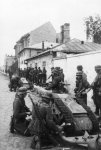
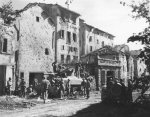
I was viewing a video on the Hürtgen Forest meat grinder before seeing your comment. The casualties (killed and wounded) are astounding. The American defeat is generally glossed over in WWII history but one could say that SHAEF could be judged to be, at a minimum wrong footed, if one looks at Market Garden, Hürtgen and Ardennes in succession.The Hürtgen Forest hubris is about to start. In fact, it's already started. When we get into it, I'm going to post General Gavin's analysis, from when he saw it unfold...
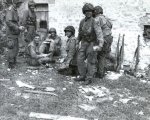
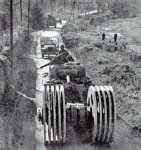

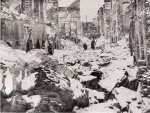
Hürtgen is right up there with Market Garden. In fact, it's where the Ardennes offensive, with Hitler's imposed radio silence, kicked off from. But we're getting a little ahead of Brad's timeline...I was viewing a video on the Hürtgen Forest meat grinder before seeing your comment. The casualties (killed and wounded) are astounding. The American defeat is generally glossed over in WWII history but one could say that SHAEF could be judged to be, at a minimum wrong footed, if one looks at Market Garden, Hürtgen and Ardennes in succession.
It was a spasm of pure hatred on Hitler's part. It was what he had wanted done to Paris but got frustrated...Looking at those pictures of Warsaw, it seems like the Germans spent a lot of resources leveling a city they had to know the Russians would soon control. It seems to me they would have been better off bombing the Russians.
I cannot begin to imagine how horrible it must have been for the survivors of these bombed European cities to see what was left of their homes once the dust settled.
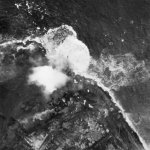
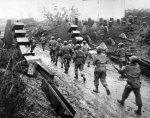
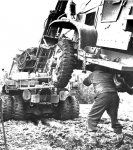
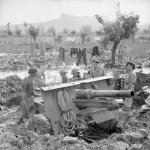
Holy cow! Where's the OSHA rep?October 3, 1944: ...The men of US 3rd Army deal with the mud of France, October 1944.;
View attachment 4518
My first thought was "I wish I had a crane when I need to change my oil..."Holy cow! Where's the OSHA rep?

